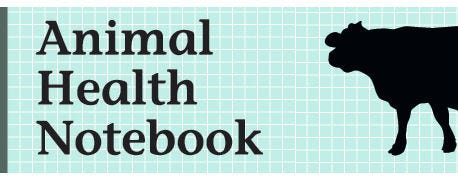
Cattle get abscesses regardless of their sex or age. I have seen them on baby calves as well as mature cows and herd bulls.
They contain variable amounts of pus and can be located anywhere on the body, though oftentimes they are on the face or neck. Rarely, they are associated with a traumatic event, such as a collision with a head gate.
Related: 3 USDA grants focus on livestock disease, pest research
 Not all abscesses need treatment but some are big and bad enough to require attention -- and caution.
Not all abscesses need treatment but some are big and bad enough to require attention -- and caution.
Many attribute them to sharp-pointed material in the feed or forage that cause small puncture wounds which become colonized by pathogenic bacteria, which leads to abscess formation.
They are usually in the superficial layers of the skin but they can be in the fascial planes between muscles, in which case they can extend to deep within the body.
Cattle tolerate this type of crud remarkably well, though sometimes weight loss is apparent and often breeding cattle with abscesses will not be pregnant. However there is no proof that abscesses in and of themselves cause abortion or infertility.
They seem to be an issue in some herds more than others and they seem to be related to nutrition. Well-fed cattle seem to have less of a problem. There may also be environmental and genetic factors at work in some of these herds as well.
The question is to treat or not to treat?
It is commonly answered for veterinarians by the client. Many clients want them gone as they look pretty bad -- though small ones will often resolve with no medical intervention.
Limiting Stress: Best Practices for a Successful Calving Season
For a majority of beef cattle producers, spring is calving season. That means a busy time, especially with weather challenges. Planning for all possibilities is the best way to prepare for a successful calving season.
Large abscesses and those deep in the tissue require lancing, irrigation and antibiotics. The lancer must open the most ventral area of the abscess to attain proper drainage of the pus pocket. Very large or deep abscesses can also require more than one access opening to ensure proper irrigation and drainage.
A good working knowledge of bovine anatomy is essential.
Once I was called upon to treat a bull for a large and well-known Hereford ranch. They had a herd bull with a rather large abscess they wanted fixed. The abscess seemed to be closest to the surface in the area just under the left ear close to where the linguo-facial vein branches off the jugular vein.
Related: Best Practices For A Successful Calving Season
I carefully inserted a line of needles along where I proposed to make an incision to lance the abscess. No Blood was evident in the needles' hubs, so I carefully cut along the line of needles I had inserted in the bull's face with my scalpel. Near the end of the cut, the bull suddenly lurched forward and to paraphrase Shakespeare in Macbeth, "Great gouts of gore" welled up and gushed out of the incision.
Dang it! I had cut the jugular vein. I discovered that, like the little Dutch boy, I could stop the flow by inserting my finger in the wound. However, the bull would surely bleed out in the time it would take for me to go to my truck and gather what I needed to close the wound.
There was no choice but to send the attending cowboy to my truck to fetch the required stuff. A tense time followed which involved the cowboy shuttling several armloads of stuff from the back of my truck to the chute side.
The bull lost lots of blood, but I was able to save his life and drain the abscess. He lived out his days with only one jugular vein.
I have managed to avoid cutting any more.
About the Author(s)
You May Also Like




